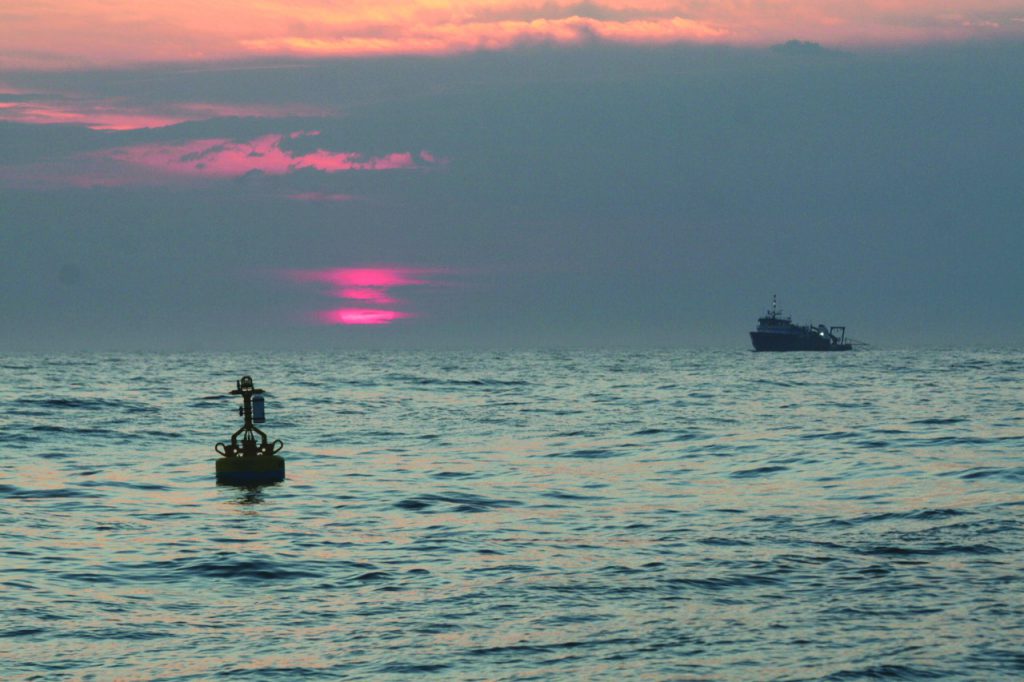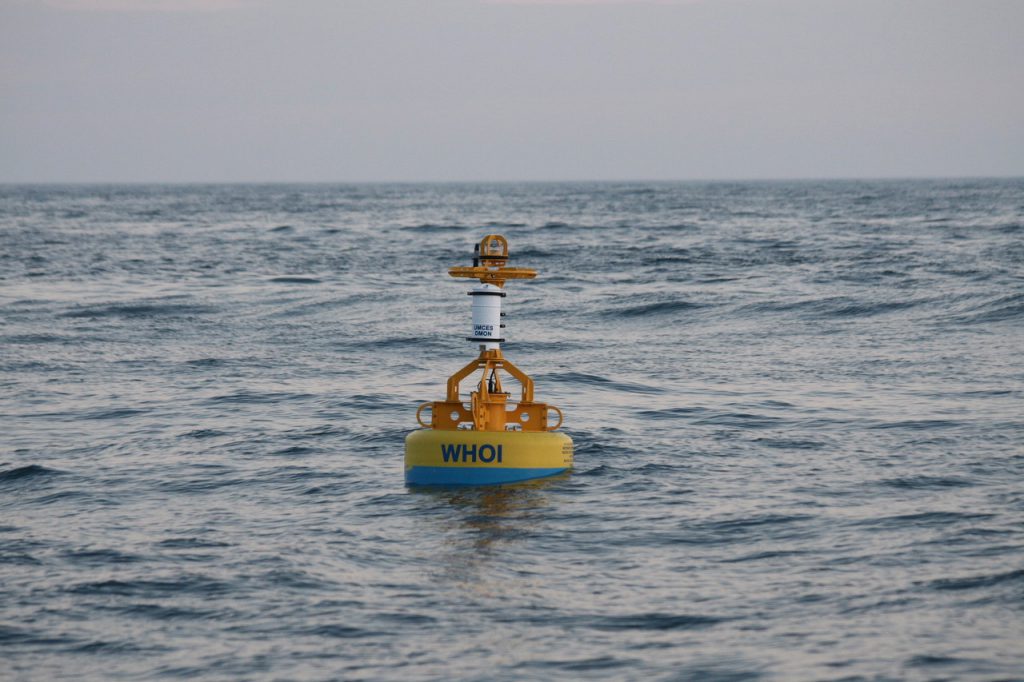Whale Watch: Offshore Monitoring to Protect Marine Mammals
The waters off the Maryland coast are home to diverse marine life, including sea turtles and marine mammals such as dolphins, porpoises, and whales.
Marine mammals, including humpback whales, are protected under the Marine Mammal Protection Act of 1972; this and other species such as sei, right, and fin whales are also listed as endangered. In fact, current population estimates of the North Atlantic right whale suggest there are fewer than 350 individuals remaining, making it a critically-endangered species. Since 2016 and 2017, respectively, increased numbers of dead or seriously injured humpback and North Atlantic right whales have been observed along the Atlantic coast from Canada to Florida.
As a result, the National Oceanic and Atmospheric Administration (NOAA) declared an “unusual mortality event” for both species, prompting further investigation and actions. Maryland helps to respond to stranded animals and contributes to their protection by working to understand where they are, how they travel between areas, how ocean changes and uses affect these species, and what can be done to protect them.
Responding to Stranded Marine Mammals
Maryland’s Marine Mammal and Sea Turtle Stranding Response Program was formed in 1990 following the stranding of a bottlenose dolphin in the northern reaches of Tuckahoe Creek, a tributary to the Choptank River. When marine mammals and sea turtles strand in Maryland waters–including both the Chesapeake Bay and the Atlantic Ocean–response teams from the Maryland Department of Natural Resources (DNR) and the National Aquarium Marine Animal Rescue Program coordinate response to assist or recover animals. When skeletal remains of rare species are found, the Smithsonian Institution osteo-prep lab assists with the response and receives skeletal specimens. This unique program and partnership are part of the state’s Fish and Wildlife Health Program, which monitors and investigates fish and wildlife mortality throughout Maryland. Data and information about strandings contributes to our collective knowledge of species and information about specific risks and impacts to aquatic wildlife.
Detecting Baleen Whales Offshore
As new uses of our oceans emerge, such as offshore wind energy generation, it is important for resource managers to continue to collect information about the movements and patterns of marine mammals offshore. Through the Maryland Energy Administration’s Offshore Wind Development Fund, DNR partnered with the University of Maryland Center for Environmental Science, Woods Hole Oceanographic Institute, and U.S. Wind Inc. to deploy state-of-the-art monitoring equipment offshore to better understand the ecology of endangered marine mammals in the offshore waters of Maryland.
A buoy attached with a listening device called a hydrophone was deployed 22 miles off the coast of the Ocean City Inlet in May 2021 and detects the vocalization of baleen whales. The sensor is known as a Digital Acoustic Monitoring Instrument, or “DMON,” which records and transmits the frequencies of sounds made by marine mammals in near real time. The hydrophone is suspended on a cable between an anchor and the surface buoy, where it collects and transmits the data to shore each day. This platform is located within the US Wind lease area and is one of ten similar buoys deployed from Massachusetts to North Carolina.
The sounds made by marine mammals vary in frequency and pitch, which allows researchers to identify individual species including sei, fin, humpback, and the critically endangered right whale. Audio data from this advanced platform allows researchers to identify marine mammal presence, habitat use, and migration patterns.
Whale Detections, Offshore Wind, and Slow Zones
This acoustic detection information is one tool that contributes to the protection of threatened and endangered marine mammals. For offshore wind, the data will inform protection measures for these species in offshore wind surveys, site assessment plans, and construction and operations plans that developers are required to submit to federal permitting agencies. In addition to this buoy, Maryland’s Offshore Wind Development Fund has supported research initiatives to help provide critical information necessary when evaluating potential offshore wind deployment. This program has contributed to studies helping the state better understand the physical characteristics, wind resources, and local and migratory fish and wildlife of the mid-Atlantic Outer Continental Shelf.
In the near term, when right whale detections are transmitted, the information is used to determine areas of boating speed “slow zones” to reduce vessel strikes to this critically endangered species. These notices also increase mariner safety by helping to avoid collisions with marine mammals.
These stranding response and research initiatives are contributing to local species conservation efforts and providing key information to resource managers, offshore wind project developers, ocean users, and the public. The many Marylanders who enjoy seeing whales, dolphins, and porpoises during a trip to the beach at Assateague Island or Ocean City can learn more about whale activity through freely available alerts on the Whale Alert and Ocean Alert apps, or by listening to the musical calls of the whales–they all have their own unique sound!
dnr.maryland.gov/ccs
Casey Nolan and Catherine McCall are Coastal Planners with the department’s Chesapeake and Coastal Service. Article appears in Vol. 25, No. 3 of the Maryland Natural Resource magazine.



 1-888-373-7888
1-888-373-7888 233733
233733